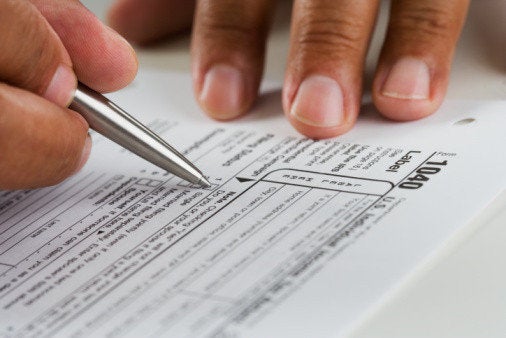
If you're among the millions of Americans expecting an income tax refund this year, you've probably already filed your 2011 return and are eagerly awaiting the money. But if you haven't already mentally spent your refund on a guilty pleasure, here are several great ways you might better put that money to work for you:
Pay down debt. Beefing up credit card and loan payments can significantly lower your long-term interest payments. Suppose you currently pay $120 a month toward a $3,000 credit card balance at 18 percent interest. At that pace it'll take 32 months and $788 in interest to pay off, assuming no new purchases. By doubling your payment to $240 you'll shave off 18 months and $441 in interest. Use this calculator to try different repayment scenarios.
If you carry balances on multiple cards, always make at least the minimum payments to avoid penalties. Paying down the highest-rate card first will save the most money overall, but some people find that paying off smaller-balanced accounts first is a better motivator.
Start an emergency fund. To protect your family against the impact of a layoff or other unexpected financial crisis (e.g., medical emergency, major car repair, theft), set aside enough cash to cover at least six months of living expenses -- nine months is even better. Seed the account with part of your refund and then set up monthly automatic deductions from your paycheck or checking account.
Boost retirement savings. Another great use for your refund is to beef up your 2012 IRA or 401(k) contribution, especially if your employer offers matching contributions; a 50 percent match corresponds to a 50 percent guaranteed rate of return -- something you aren't likely to find in any investment.
- Replace older appliances with energy-efficient models that will pay for themselves through lower utility bills. For example, replacing a 1980s refrigerator with an ENERGY STAR model will save over $100 a year. The government's ENERGY STAR website can help you find ENERGY STAR products and estimate savings.
- Sell your older appliances or donate them to a charitable organization for the tax write-off to help offset the cost of new models.
- Switching from traditional light bulbs to energy-efficient alternatives like CFLs and LEDs, while initially more expensive, can save about $6 per bulb in annual energy costs. Just make sure they are ENERGY STAR-qualified models, which exceed minimum standards. Click HERE to learn more.
- Schedule routine car maintenance. According to AAA, simply changing your car's air filter once a year can save over $270, while replacing older spark plugs can save $540 in wasted fuel.
- Ask whether your utility company offers free or subsidized home energy audits. An audit will tell you which investments -- such as increasing home insulation and replacing drafty windows and doors -- will lower both winter and summer energy bills.
Overcome bad habits. If all that stands between you and quitting an unhealthy (and expensive) habit is the treatment cost, now's your chance to make a down payment on your health. Also ask whether your health insurance will help cover weight loss and smoke-ender programs or at least lower your premiums afterwards.
Finance education. Strengthen your career prospects and earnings potential by adding new skills through college courses or vocational training. Ask if your employer will help pay for job-related education.
You can also set money aside for your children's or grandchildren's education by contributing to a 529 Qualified State Tuition Plan or Coverdell Education Savings Account. Bonus: Your contributions will grow tax-free until withdrawn. Visit the U.S. Securities and Exchange Commission's Introduction to 529 Plans and the IRS's Tax Topic 310 -- Coverdell Education Savings Accounts for details.
Vacation fund. Start budgeting and saving now for your summer vacation so you're not caught off guard when the bills start rolling in. See my previous blog, Trim Your Vacation Costs, for travel budgeting tips.
Charitable contributions. Many people wait until year's end to make charitable donations, but nonprofits need help year-round.
Prepay bills. If you expect major expenses later this year (e.g., insurance premiums, orthodontia, college tuition), start setting money aside now so you won't rack up interest charges. Also, use this calculator to see how paying slightly more each month toward your mortgage principal can save you thousands of dollars in interest over the life of the loan.
And finally, if you regularly receive large tax refunds, you're probably having too much tax withheld from your paycheck -- you're essentially giving the government an interest-free loan. Ask your employer for a new W-4 form and recalculate your withholding allowance using the IRS' Withholding Calculator. This is also a good idea whenever your pay or family situation changes significantly (e.g., pay increase, marriage, divorce, new child, etc.)
This article is intended to provide general information and should not be considered legal, tax or financial advice. It's always a good idea to consult a legal, tax or financial advisor for specific information on how certain laws apply to you and about your individual financial situation.
To participate in a free, online Financial Literacy and Education Summit on April 23, 2012, go to Practical Money Skills.